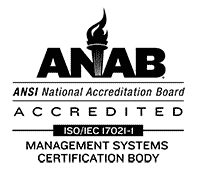The Association of Language Companies (ALC) puts on its annual conference in Las Vegas on May 18-21, 2011.
Roundtable: Quality Control for Interpreters
Kristin Quinlan (Certified Languages International)
How can companies make sure their interpreters are of the highest caliber? Issues discussed:
- Employees versus contractors; in some companies, all interpreters are employees (particularly in CA); in others, they are independent contractors.
- A Wisconsin company got three audits in nine years; decided to make all their interpreters employees.
- Employee model is expensive but safe.
- Quality control: some companies send observers for on-site interpreting (both announced an unannounced); expensive but effective quality assessment. Other companies rely on client feedback.
- Other quality control methods mentioned: six-week onboarding process, battery of tests (written and oral), in-field supervisors, continuous education.
- Observing interpreters by LSPs who employ them is a fascinating experience and is also appreciated by the interpreters.
- Question: How do you use quality control methods like on-site observation if you service clients globally? What else you can do for quality control? Answer: A pre-qualified Lead Interpreter can take on that role.
- Interpreter certification is unique in that it is bestowed on the interpreter often without any follow up, observation, monitoring, etc.
- Recruiting: Through website; recruiting department; ProZ; ATA; ads in in-language newspapers locally; relationships with local non-English communities; relationships with immigration organizations (who can alert LSPs about influx of new immigrants from a particular region); churches and mosques; restaurants; stores; determine who the industry leaders are in a particular communities and develop relationships with them; your interpreters can provide referrals; college international clubs.
- Quality control in languages of lesser diffusion: Role-play scenarios; one interpreter tests another.
- Quality review: In OPI, written evaluations are common with suggestions for improvement.
- Dealing with client complaints: Not always an interpreter error – analysis is needed first. Formal written report for the client is recommended. Train the client how to work with interpreters. Suggestion: print the instructions on the back of usage cards.
- ASTM International has a subcommittee for interpreters.
- Interpreters should be trained not only how to interpret, but also how to do quality control and interact with clients.






